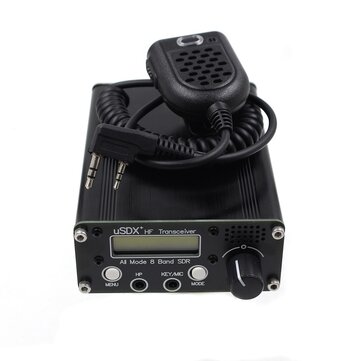
uSDR uSDX+ Plus V2 10/15/17/20/30/40/60/80m 8 Band SDR All Mode HF SSB QRP Transceiver
Only US$125.90, buy best uSDR uSDX+ Plus V2 10/15/17/20/30/40/60/80m 8 Band SDR All Mode HF SSB QRP Transceiver sale online store at wholesale price.
I didn't but should've bought the auto tuner for it...I'll probably wait until I get the rig first. If I decide to keep it, I'll buy the tuner.
Stuck in KC Missouri...I hate the USPS tracking. It's almost never correct...why do they even use it?
Last edited:

